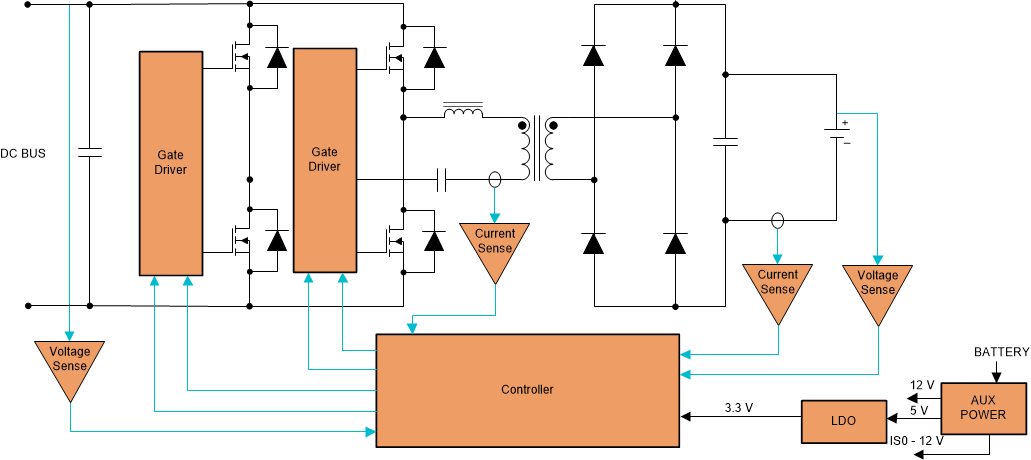SLLA498 October 2020
4.3 Resonant LLC Converter
The LLC converter being a resonant converter can have very low switching losses. The output voltage regulation is achieved by varying the switching frequency of operation. The gain of this converter is a function of switching bridge gain, resonant tank gain and transformer turns ratio. There are three modes/regions of operation for the resonant LLC converter – operation at resonant frequency, above resonant frequency and below resonant frequency. During below resonant frequency operation, the resonant tank current reaches zero within the switching cycle and hence leads to soft switching on secondary rectifier diodes. However, this leads to more conduction losses due to higher circulating energy. Above resonant frequency operation, leads to increased switching losses and hard commutation of secondary rectifier diodes, but results in lower conduction losses due to reduced circulating energy. Hence the best performance of these converters is obtained when operated close to resonance frequency where ZVS turn on and ZCS turn off is possible. This converter provides unidirectional power flow and is generally used in applications less than 5 kW. Figure 4-3 shows the topology of LLC resonant converter.
 Figure 4-3 LLC Converter.
Figure 4-3 LLC Converter. Paralleling and synchronization of multiple LLC converter modules to increase the power output is difficult and often requires complex control logic for safe operation. Implementation of synchronous rectification in LLC converter quite tricky, especially in high output voltage designs (greater than 400 V). The ripple current and peak voltage stress across the active and passive switching devices are significantly high. Higher output capacitance is needed for handling high ripple current. Also the transformer of LLC converter is also comparatively higher in size. These passive components significantly reduce the power density of the converter. Since this converter soft switches during turn on and turn off, the EMI performance is comparatively better. The TI reference design Two Phase Interleaved LLC Resonant Converter Reference Design Using C2000™ MCUs contains details on the implementation of this converter. This DC/DC topology being unidirectional, is an option to consider for the DC/DC stage (see Figure 3-1) between the solar panels and HV DC Bus.